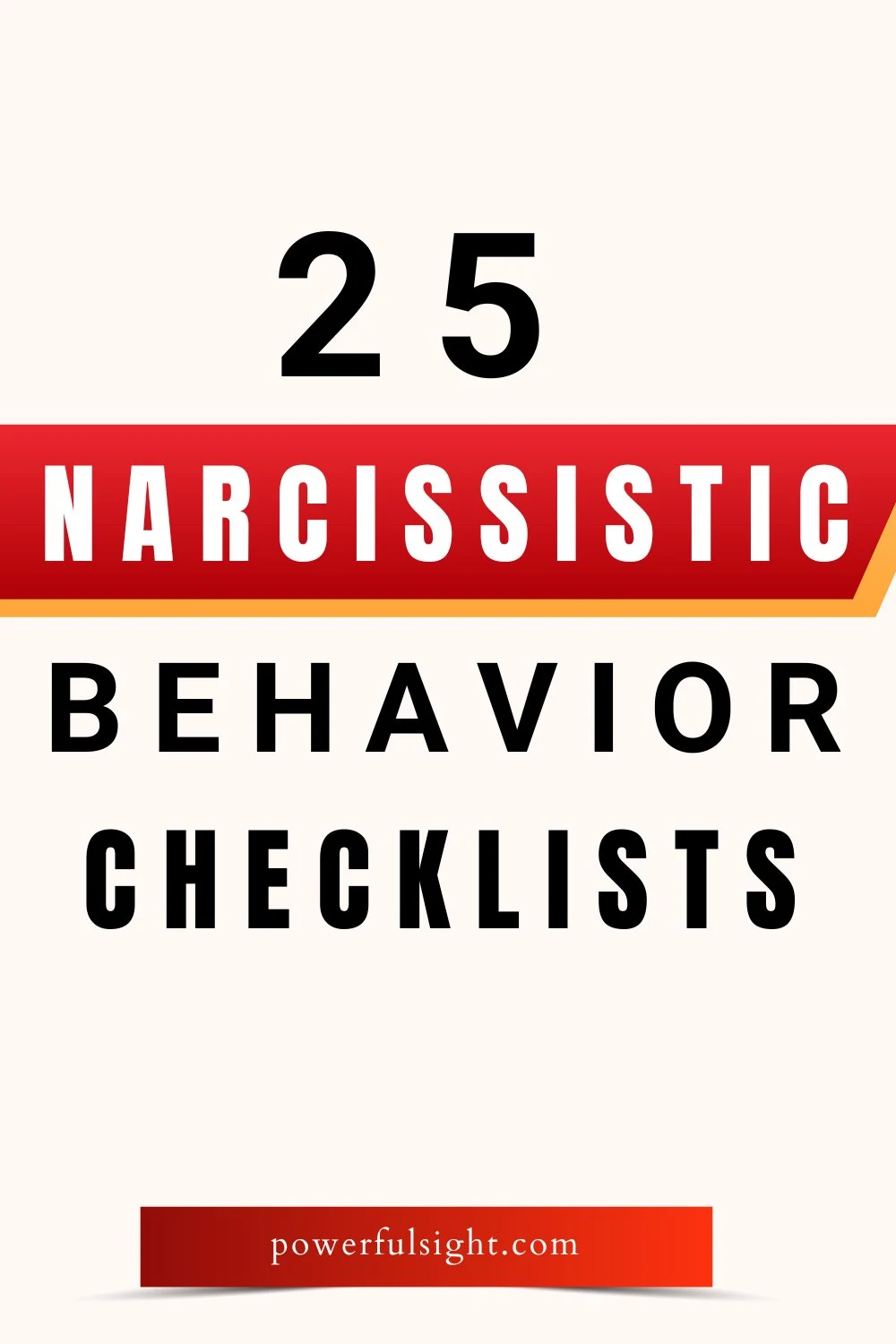Narcissistic behavior shows up in many ways, and it’s important to recognize the signs early. A narcissistic behavior checklist is a helpful tool to spot these traits in yourself or others. It covers everything from small signs of arrogance to more obvious acts of manipulation or entitlement.
Narcissism is about having an inflated sense of self-importance and craving constant admiration. But it doesn’t always look the same. Some signs are obvious; others are easy to miss.
The checklist can help highlight these behaviors, like a lack of empathy, using people for personal gain, and being obsessed with success and power. Understanding these traits can help you see how narcissism affects relationships and daily life.
This checklist isn’t just for self-checks. It’s also for anyone dealing with a friend, family member, or coworker who might show narcissistic traits. Pay close attention to patterns in relationships, how they react to criticism, and their way of communicating. Knowing these signs can help you better handle interactions with narcissistic people.
In the end, the checklist gives you a clear way to spot and understand narcissistic behavior, leading to better conversations, healthier boundaries, and smarter choices about the people around you.

Narcissistic Behavior Checklist
- Grandiosity: Exaggerating achievements, feeling superior, and expecting admiration.
- Obsession with Success: Constantly fantasizing about wealth, power, or beauty.
- Belief in Being Special: Thinking only certain people can understand them.
- Craving Attention: Always needing praise and validation from others.
- Sense of Entitlement: Expecting special treatment without earning it.
- Using Others: Taking advantage of people to meet personal goals.
- Lack of Empathy: Struggling to recognize or care about others’ feelings.
- Envy: Feeling jealous of others or believing others are jealous of them.
- Arrogance: Acting superior and putting others down.
- Emotional Outbursts: Reacting with anger or irritation to criticism.
- Blaming Others: Refusing to take responsibility for mistakes and blaming others instead.
- Superficial Charm: Seeming charming at first but showing selfishness over time.
- Difficulty with Criticism: Taking feedback as a personal attack.
- Impulsiveness: Acting without thinking about the consequences.
- Self-Centered Communication: Steering conversations back to themselves.
- Ignoring Boundaries: Disrespecting people’s personal space or limits.
- Constant Need for Validation: Always seeking attention to feel valued.
- Manipulation: Twisting facts or emotions to control people.
- Over-focus on Appearance: Being overly concerned with looks and image.
- Chronic Discontent: Rarely satisfied with what they have.
- Projecting Insecurities: Blaming others for their own flaws.
- Undermining Others: Putting people down to feel superior.
- Emotional Instability: Overreacting emotionally, even over small issues.
- Attention-Seeking Behavior: Being dramatic to stay in the spotlight.
- Deflection of Responsibility: Shifting blame onto others to avoid guilt.
Related: 20 Clear Signs of A Narcissistic Mother
Clearing Up Misconceptions About Narcissism
Many people misunderstand narcissism. One big myth is that narcissists are always loud, arrogant, and easy to spot. In reality, some narcissists can seem shy, friendly, or even generous at first.
Another myth is confusing narcissism with confidence. True confidence is steady and secure. Narcissistic “confidence” is fragile and depends on others’ approval.
Some also think narcissism is permanent. While personality traits are deep-rooted, narcissistic behaviors can vary over time and situations. Some people only show these traits occasionally.
Finally, not every narcissist is abusive. Some people with narcissistic traits can still have meaningful relationships, though certain behaviors might cause problems. Recognizing the difference between toxic behaviors and normal flaws is key.
Related: 5 Traits Daughters of Narcissistic Mothers Have in Common
Getting Help and Finding Resources
If you notice narcissistic traits in yourself or someone close to you, seeking support can help. Therapy is one of the best options—it offers a safe place to understand these patterns and find ways to heal. A therapist can guide you through setting boundaries or improving your own behavior.
Support groups are another great resource. They give you a chance to connect with others who understand your experiences. Hearing from others can be comforting and encouraging.
There are also many books, websites, and forums that explain narcissism in easy-to-understand ways. They offer advice, real-life examples, and coping tools.
If you recognize these behaviors in your life, know that change and healing are possible with support, education, and time.
Final Thoughts
Recognizing narcissistic behavior is an important step toward building healthier relationships and protecting your emotional well-being. This checklist isn’t about labeling people—it’s about noticing patterns that might be hurting you or others.
Remember, narcissism exists on a spectrum. Just because someone shows some traits doesn’t mean they’re a full-blown narcissist. It’s about repeated patterns, not one-off behaviors.
Using this checklist can help you make smarter choices about who you trust, how you interact with others, and how you grow personally. Whether it leads you to set better boundaries, have important conversations, or simply understand yourself better, it’s a powerful tool for building a healthier, happier life.
Save the pin for later

- 100 Short Inspirational Quotes for January - 26/12/2025
- 12 Ways To Detox Your Life In 2026 - 26/12/2025
- How To Look Good Everyday - 26/12/2025
